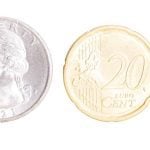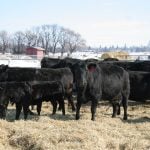CALGARY – At the end of 1994 there were twice as many cattle in Alberta as people.
With 5.4 million cows and calves, 1994 was a record year for the province and there are no signs of a slowdown, as Alberta continues to dominate the Canadian cattle industry.
“We have never had a five million head inventory in this province before,” said Anne Dunford, senior market analyst for Canfax, the marketing information arm for the Canadian Cattlemen’s Association.
In her annual report, Dunford told the Alberta Cattle Feeders Association convention that the Canadian herd is continuing to expand at a rate of about five percent.
Read Also

Lending policy still focused on primary producers: Farm Credit Canada
Farm Credit Canada said it has not changed its business practices and remains committed to supporting all producers, after a report from an Ottawa-based media outlet claimed otherwise.
As for the Canadian feeder herd, Alberta holds 43 percent, Saskatchewan has 23 percent, Manitoba has 13 percent followed by Ontario with 10 percent. British Columbia registered two percent.
In 1994, Alberta fed and finished 1.7 million animals, up six percent over 1993. Dunford predicted the feeding industry will expand by about five percent in 1995. The most recent statistics gathered by her office show 70 percent of those Alberta steers and heifers are fed in lots south of Airdrie, which is about 10 kilometres north of Calgary.
“It is a very highly concentrated area of cattle feeding going on in this country now,” she said.
Alberta finishes 65 percent of Canadian cattle, making it the fifth largest feeding area in North America behind Colorado, Kansas, Nebraska and Texas. If it continues to grow, Alberta will edge out Colorado, which feeds just over two million, said Dunford. Texas finishes about five million head a year.
Alberta imported about 50,000 feeders last year. About 20,000 of these came from Hawaii. The remainder were mostly from the Pacific Northwestern states, said Dunford.
A record amount of beef was produced by those cattle, making them the most productive animals since the last record year of 1977.
In 1980, the average carcass size was 600 pounds. In 1994, carcasses were 717 pounds. With larger beef cows weaning bigger calves and higher placement weights in feedlots, it’s anticipated meat production will continue to increase until 1997.
As the Canadian dollar remains low, cattle prices are strong. In 1991 record prices were paid for all classes of cattle.
“For every cent moved down in the dollar, cattle prices move up a buck a hundred,” said Dunford. Dunford also sees the price spreads among the three classes of calf, feeder and finished steer narrowing.
In total, 42 percent of the Canadian beef herd is exported at a total value of $1.7 billion, said Dunford. While live exports of feeders and slaughter animals have declined by about one percent, beef exports to the United States were up by 20 percent as the lower Canadian dollar favors exports.
As of 1994, there was a 60-40 split as beef exports continued to even out with live animal sales. Most of the exports go to the U.S.
In 1994, 65,000 head of feeders moved south, compared to the record year of 1992 when 360,000 were exported.
Canada continues to import beef mostly from the United States. New Zealand and Australia each sell a small percentage of manufacturing quality beef for the meat processing sector.















